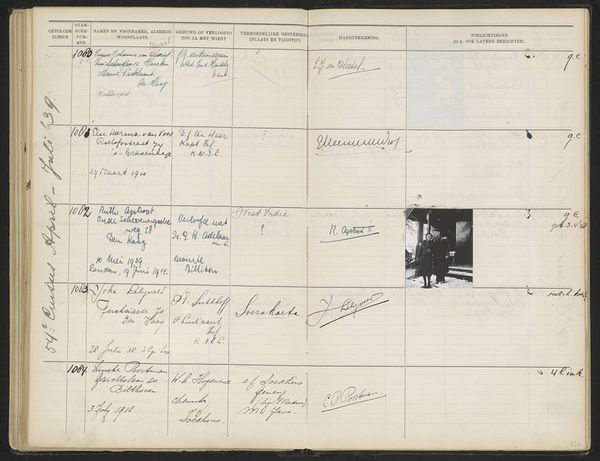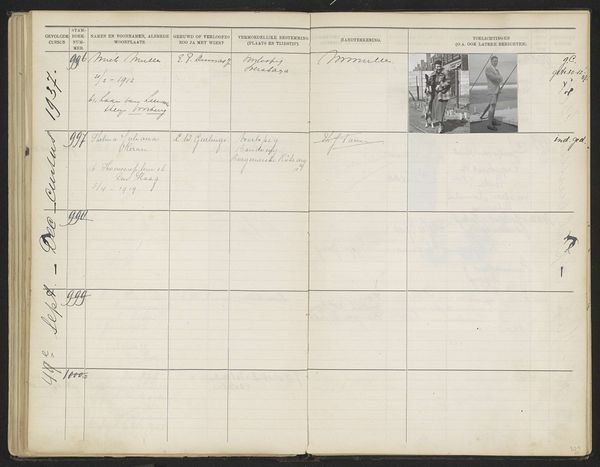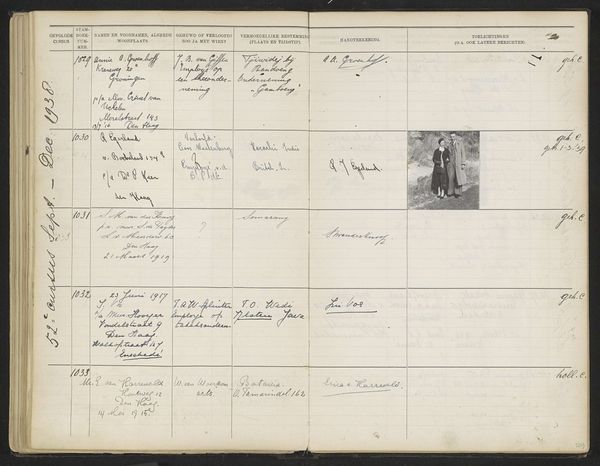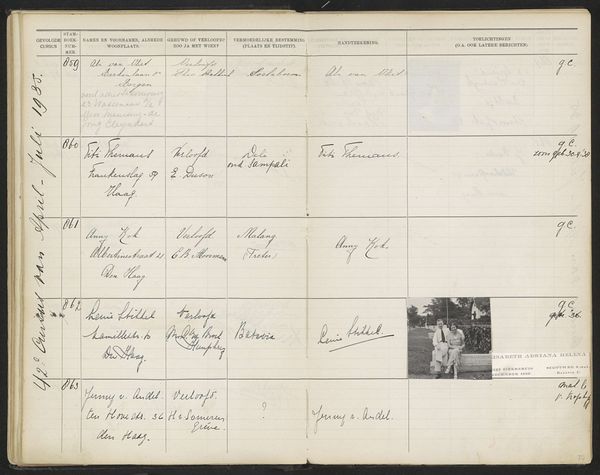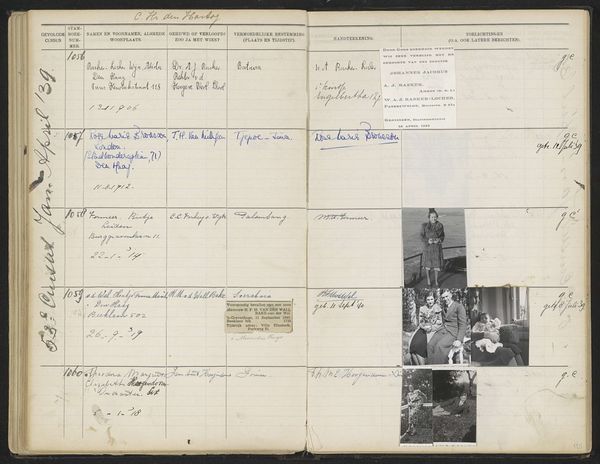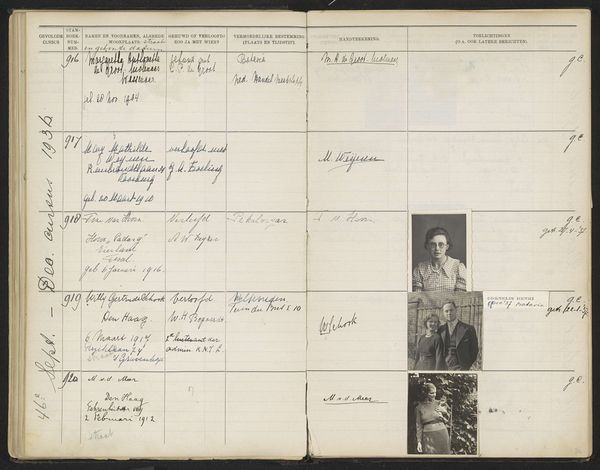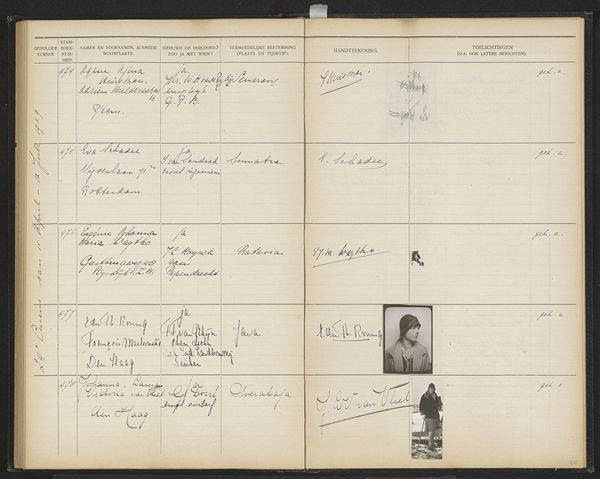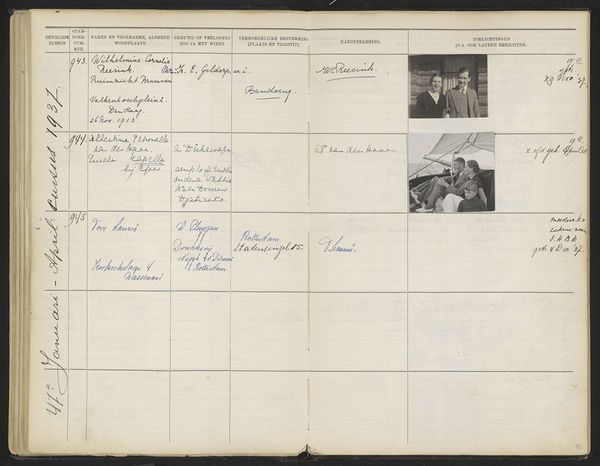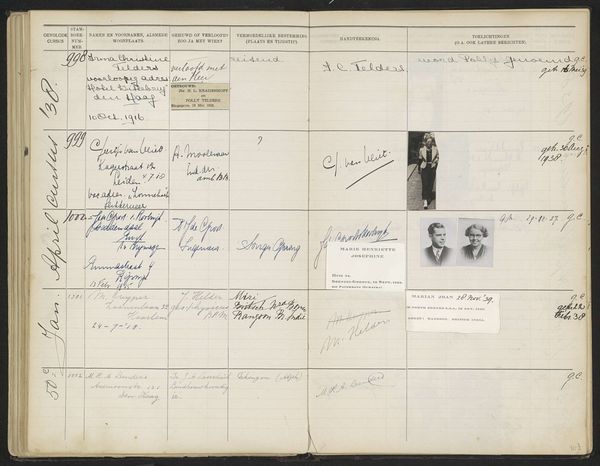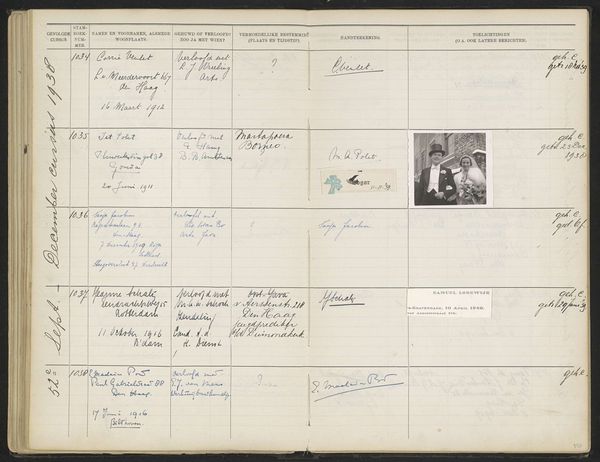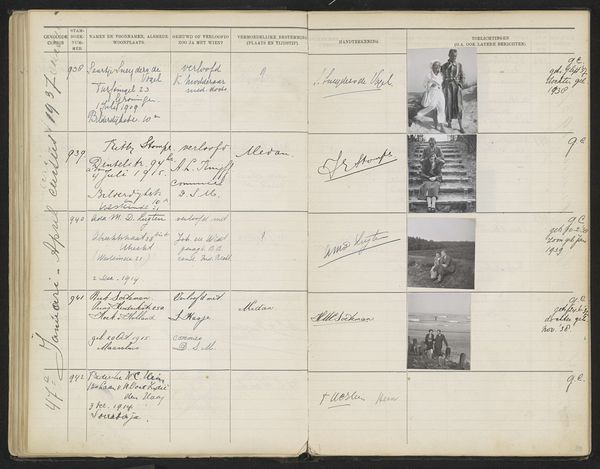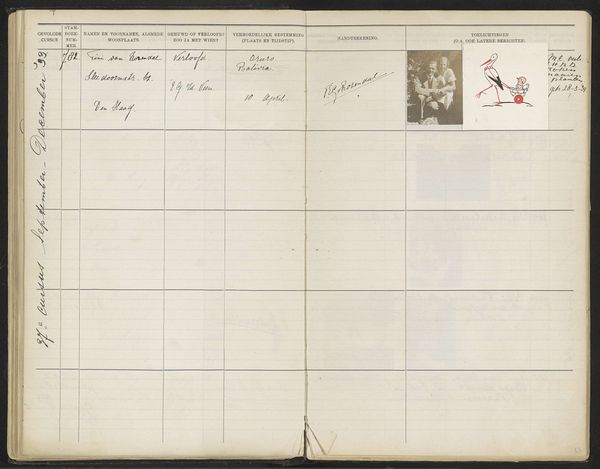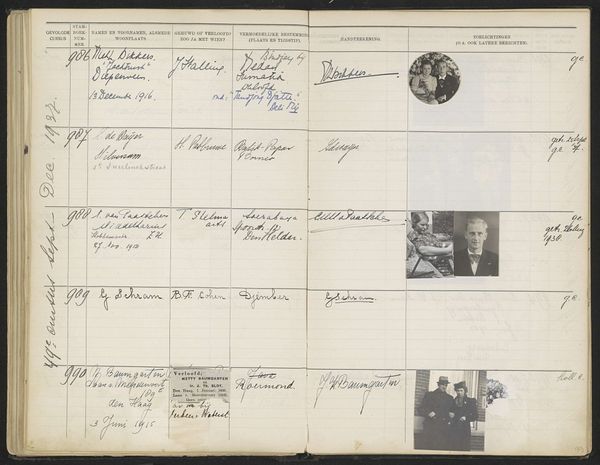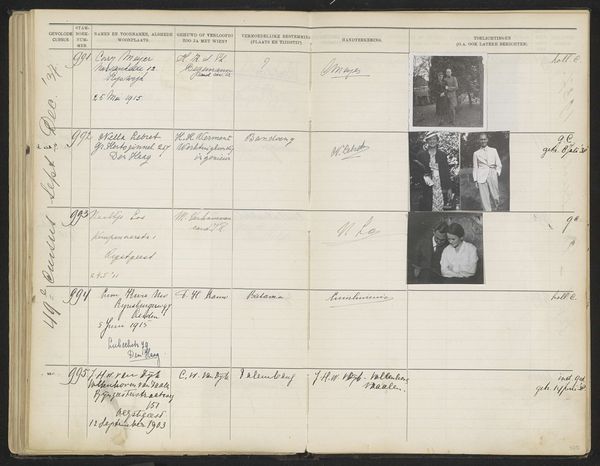
Blad 111 uit Stamboek van de leerlingen der Koloniale School voor Meisjes en Vrouwen te 's-Gravenhage deel II (1930-1949) Possibly 1938 - 1939
0:00
0:00
mixed-media, paper, photography
#
portrait
#
aged paper
#
mixed-media
#
dutch-golden-age
#
sketch book
#
hand drawn type
#
paper
#
photography
#
personal sketchbook
#
hand-drawn typeface
#
ink colored
#
pen work
#
sketchbook drawing
#
storyboard and sketchbook work
#
sketchbook art
Dimensions: height 337 mm, width 435 mm
Copyright: Rijks Museum: Open Domain
Editor: This is page 111 from "Stamboek van de leerlingen der Koloniale School voor Meisjes en Vrouwen te 's-Gravenhage deel II (1930-1949)," likely from 1938 or 1939. It's a mixed-media piece featuring handwriting, photographs, and what looks like ink drawings. The overall impression is that of a formal register, but with these little glimpses into individual lives. How do you interpret the significance of presenting individual portraits within such a structured format? Curator: It's a fascinating juxtaposition, isn't it? The rigid columns of the ledger attempt to categorize and contain these young women, yet the photographs resist complete assimilation. We have to consider this within the historical context of the Colonial School. Who were these women? What role were they expected to play in the colonial system? Editor: Presumably, to serve in some capacity within the Dutch colonies. The register feels almost like a preparation for that role, fitting people into boxes. Curator: Precisely. And by looking at the columns – birthplace, family, and so on – we see the very structures of power attempting to define these women based on origin and social standing. What do you think the addition of the photographs does to that power dynamic? Editor: It feels like an assertion of individuality, a subtle act of defiance against being reduced to mere data points in a colonial project. It humanizes them. Curator: Exactly. Each image, each handwritten entry, hints at a story beyond the confines of the register. This book isn’t just an archive; it’s a site of potential resistance, of women asserting their identities within a system designed to control them. Considering these women entered the school during a time when colonial tensions were on the rise, what considerations would be most useful for further analysis? Editor: The individual stories, for one. Digging into the backgrounds of these women would shed light on the nuances of their experiences. And understanding the curriculum and expected roles of the graduates could tell us more about what the register was really meant to do, and the success or failure of those intentions. Curator: Indeed. By combining historical context with the visual details of this register, we can start to unpack the complexities of identity, power, and resistance within the colonial system.
Comments
No comments
Be the first to comment and join the conversation on the ultimate creative platform.
